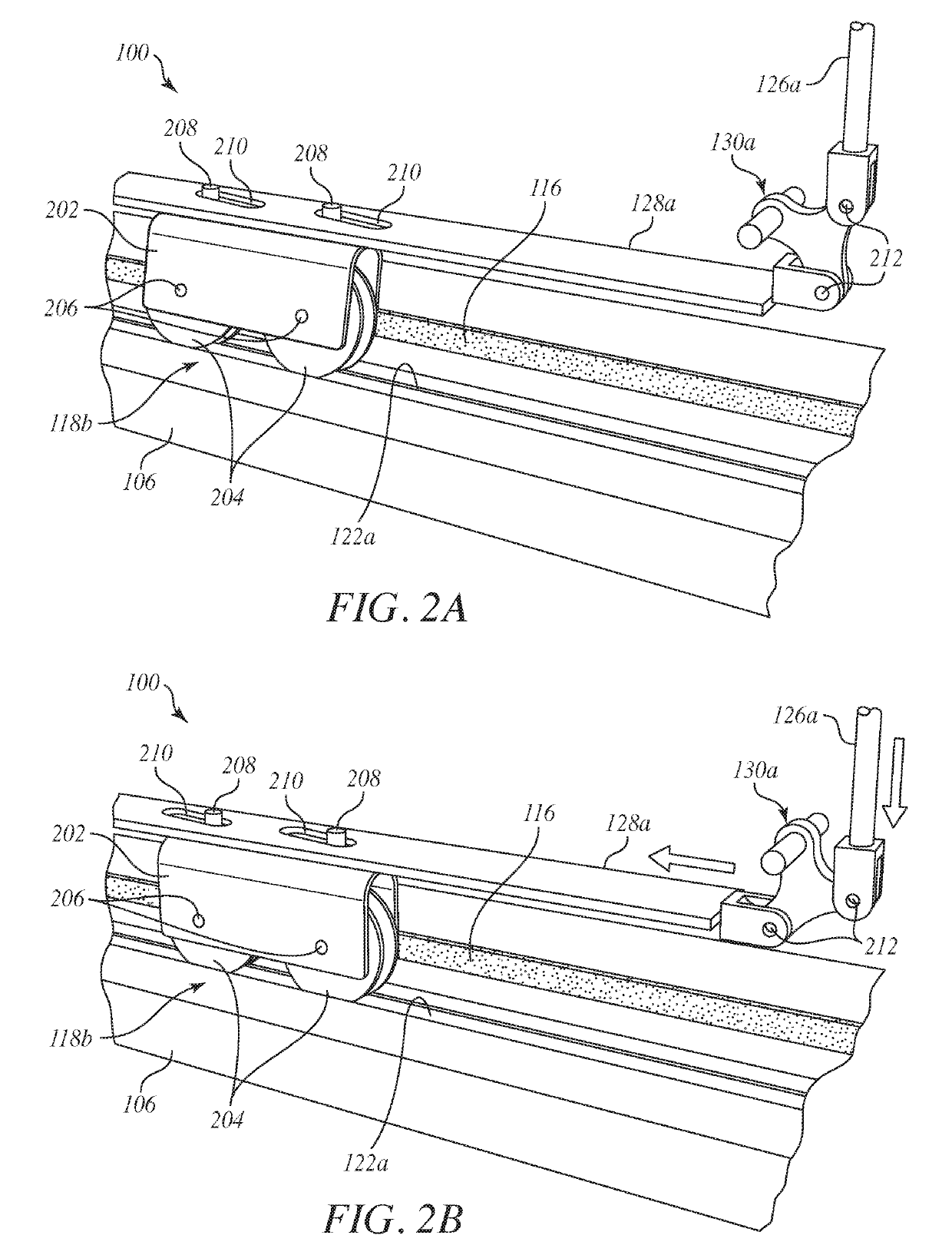Sliding Door System
a sliding door and door technology, applied in the field of sliding doors, can solve the problems of losing the effectiveness of sealing, difficult sealing of sliding door systems, and wear of weather stripping, and achieve the effect of removing friction and wear from the seal
- Summary
- Abstract
- Description
- Claims
- Application Information
AI Technical Summary
Benefits of technology
Problems solved by technology
Method used
Image
Examples
Embodiment Construction
[0030]FIGS. 1A and 1B are partially exposed front views of an example sliding door assembly 100, according to one or more embodiments. More specifically, FIG. 1A shows the sliding door assembly 100 (hereafter the “assembly 100”) in a sealed position (alternately referred to as the “closed” position), and FIG. 1B shows the assembly 100 in a sliding position (alternately referred to as the “open” position). As illustrated, the assembly 100 includes a door panel 102 and a rectangular frame 104 that supports the door panel 102. In the illustrated view, the front portion of the door panel 102 is removed to expose the interior mechanisms and operation of the assembly 100.
[0031]The frame 104 includes a bottom member 106, a top member 108, and opposing side members 110 and 112 that extend between the bottom and top members 106, 108. A continuous or semi-continuous raised lip 114 may be provided and otherwise defined on some or all of the frame 104 and extend inward toward the center of the ...
PUM
| Property | Measurement | Unit |
|---|---|---|
| angle | aaaaa | aaaaa |
| constant biasing force | aaaaa | aaaaa |
| friction | aaaaa | aaaaa |
Abstract
Description
Claims
Application Information
 Login to View More
Login to View More - R&D
- Intellectual Property
- Life Sciences
- Materials
- Tech Scout
- Unparalleled Data Quality
- Higher Quality Content
- 60% Fewer Hallucinations
Browse by: Latest US Patents, China's latest patents, Technical Efficacy Thesaurus, Application Domain, Technology Topic, Popular Technical Reports.
© 2025 PatSnap. All rights reserved.Legal|Privacy policy|Modern Slavery Act Transparency Statement|Sitemap|About US| Contact US: help@patsnap.com



